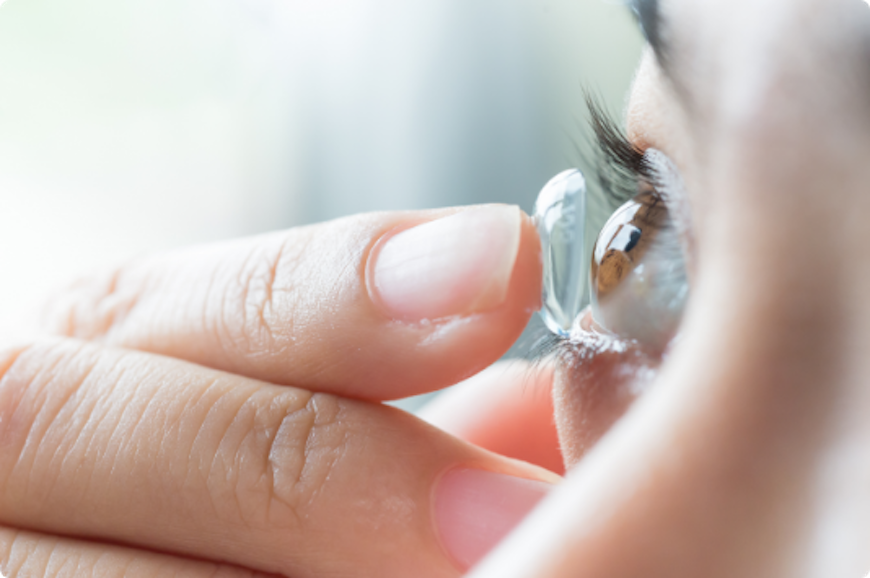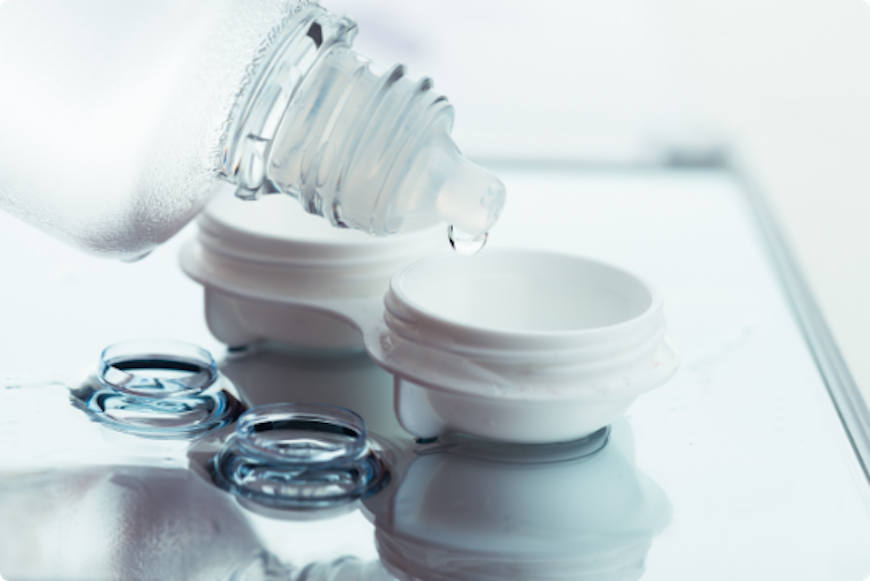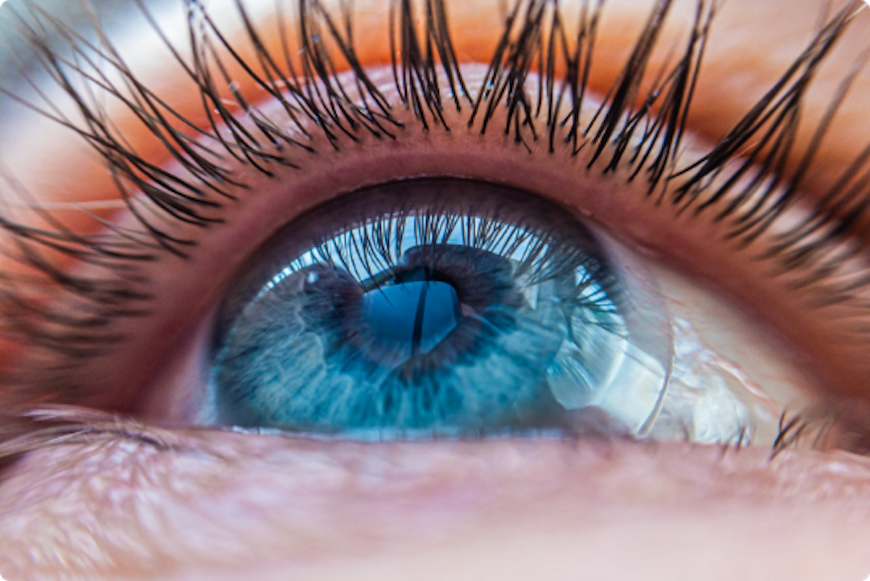Contactology
Refractive anomalies (myopia, hyperopia, astigmatism, and keratoconus) can be corrected in three ways: wearing eyeglasses, wearing contact lenses, or with refractive surgery.
Wearing contact lenses is more comfortable in everyday life especially among young people and active athletes. This optic supply improves vision clarity and widens view field.

Contact lenses can be:
- Hard non-gas permeable contact lenses (PMMA)
- Hard gas permeable contact lenses (RGP): spherical, non-spherical, torical, tonical, and multifocal
- Soft: spherical, non-spherical, torical, and multifocal
- Soft coloured contact lenses
- Prosthetic lenses
Based on usable time, contact lenses can be: monthly, tri-monthly, or annual.
There are special types of soft lenses for extended wear up to thirty days and nights. Because of its special characteristics (lenses with highest oxygen permeability), they are certified for therapeutic use.
These characteristics are determined by manufacturer and have to be monitored by ophthalmologist.


When you make a decision to wear contact lenses, our ophthalmologist will perform complete examination first (detailed examination of eyelids, eyelid edges, tear film, front segment, tarsal subjunctive, IOP, keratometry, and refraction). Then there is placement of temporary lens and its fitting. Good fit includes central position of the lens while looking straight with certain amplitude looking in other directions. Soft contact lens has a good fit if it abides by the “three contact point” rule: if it is parallel with upper and lower sclera as well as top of cornea that it touches.
Hard lens fitting consists of fitting the smallest and thinnest lens that give a good fit and good vision clarity. Lenses should be comfortable and should not cause any changes on cornea.
Modern semi hard lenses have high oxygen permeability so they can be fitted with bigger diameter which enables more comfort and lens stability.
Most of the lenses are not made for multi-day use so they have to be taken out before going to bed.
Cleanness is particularly important when using contact lenses. Before use, lens should be washed with soft soap and wiped off with clean towel that doesn’t leave any strings behind.
Contact lenses have to be maintained daily with adequate formula made for lenses in order to: maintain its optic quality, prevent damages on the front side of the lens, remove protein deposits, and reduce the number of pathogenic microorganisms. Daily wash, cleansing, disinfection, and enzyme treatment (removing deposits) is necessary in order to prevent complications when wearing them.
Lenses have their usable lifetime and should be replaced on time to avoid serious complications (allergies, infections).
Certain dioptres, eyeglasses, adequate lens fitting, training for proper use and wear of lenses, eye examination, and check-ups should be done by the expert in that area, contactology ophthalmologist.
Complete selection of all soft lenses and highest quality, tested accessories for lens maintenance can be found at Clinic Maja.

